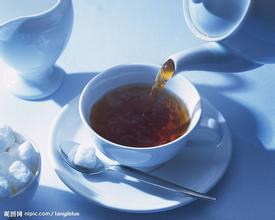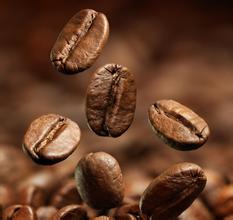The Historical and Cultural Origin of the planting method of Coffee Tree
Coffee Tree-planting History
There are many legends about the discovery of coffee. There is a legend that in the 13th century, there was a prince in Ethiopia who found that his camel loved to eat a small oar fruit on a bush, and he was very excited and energetic after eating it. So he also picked some small berries to taste, and finally discovered this refreshing coffee drink. Another legend is that one day in 500 BC, an Ethiopian shepherd herded his sheep to a strange place for grazing. On a small hill, the sheep ate a kind of small red fruit on a small tree. after returning in the evening, the sheep were unusual in the fence, not as peaceful and docile as usual, but excited, restless, tearing and shouting, and even jumping all night long. The owner thought that the sheep had been poisoned by eating some grass and got up several times to take a closer look at the lights, but they saw the sheep in high spirits and alive. It doesn't look like poisoning pain. The next morning, the shepherd was ready to drive the sheep to another place for grazing. After opening the fence, the sheep ran desperately to the mountain with little red fruit. No matter how the shepherd whipped to stop it, when the shepherd was exhausted, he had to follow the sheep to the hill. The shepherd was very surprised to see each sheep scrambling to eat the little red fruit, so he picked some small red fruit and chewed it over and over again and found that the little red fruit was sweet with some bitterness. When he returned from grazing, the shepherd felt so excited that he couldn't sleep all night. He even wanted to dance with the hands of the sheep and dance with his feet. The magic of the little red fruit spread quickly, and the shepherds of Ethiopia picked and chewed the little red fruit everywhere and sold it on the market. Later, this little red fruit developed into the most popular coffee drink in the world today.
In fact, the Arabs began to grow coffee in 525 BC, and chewing fried coffee beans became popular in the Arab region. In 890 AD, Arab merchants sold coffee beans to Yemen, and Yemenis made coffee beans into drinks for the first time. In the 15th century, coffee was introduced into Europe, Asia and soon into America. By the 18th century, coffee was widely grown in tropical and subtropical regions of the world and became one of the three major drinks in the world. Coffee ranks first among the top three beverages in annual sales, three times as much as cocoa and four times as much as tea. Although coffee has been cultivated in the world for more than 2000 years. However, coffee has been cultivated in China for only a few hundred years. In 1884, Taiwan Province began to introduce coffee. At the beginning of the 20th century, overseas Chinese brought coffee back from Malaysia to grow in Hainan Province. Later, tropical and subtropical provinces in the south began to grow plant coffee one after another. Although the cultivation time is short, the coffee from Hainan and Yunnan provinces in China has excellent quality and unique charm, so it enjoys a high reputation in the world. After some foreign businessmen buy it at a low price, it is processed and sold to the international market. It has become an expensive world-class drink, especially the small-grain coffee grown in Yunnan Province. Because of the large temperature difference between day and night in Yunnan, it is conducive to the accumulation of substances in it. So it tastes strong but not bitter, fragrant but not strong, oily and fruity, so it is praised as "the best quality coffee in the world" by coffee merchants at home and abroad.
The origin of the coffee tree is Ethiopia in Africa. In botany, coffee trees belong to the evergreen trees of the subgenus Rubiaceae, and coffee beans, commonly known as coffee beans, are actually the seeds of the fruit of coffee trees. They are called coffee beans only because they are shaped like beans. Climate is the decisive factor for coffee cultivation. Coffee trees are only suitable for growing in the tropics or subtropics, so the zone between latitude 25 degrees south and north is generally called coffee belt or coffee area. However, not all the land located in this area can cultivate good coffee trees.

Important Notice :
前街咖啡 FrontStreet Coffee has moved to new addredd:
FrontStreet Coffee Address: 315,Donghua East Road,GuangZhou
Tel:020 38364473
- Prev

Variety types in the growth process of coffee trees
Native to Brazil, it is another hybrid tree species; somewhere between CATURRA and MUDO NOVO. The tree is usually low in shape, but slightly taller than CATURRA and easy to harvest, and the coffee fruit begins to bear fruit in late summer. It has more sour taste, and good sour taste makes you secrete salivary acid like lemon and orange, which is usually produced at high altitude and high density.
- Next

Preheating of raw beans in the stage of direct fire baking
At this stage, the temperature starting point must be controlled above 180 degrees, which is the center of the whole baking process. If you deviate from this center, it is impossible to get good quality coffee. The obvious signs of this stage are the first explosion and the second explosion. It can also be called the bursting stage of coffee beans. This stage is an important stage to generate various flavors of coffee. Firepower control, furnace temperature and exhaust control
Related
- Detailed explanation of Jadeite planting Land in Panamanian Jadeite Manor introduction to the grading system of Jadeite competitive bidding, Red bid, Green bid and Rose Summer
- Story of Coffee planting in Brenka region of Costa Rica Stonehenge Manor anaerobic heavy honey treatment of flavor mouth
- What's on the barrel of Blue Mountain Coffee beans?
- Can American coffee also pull flowers? How to use hot American style to pull out a good-looking pattern?
- Can you make a cold extract with coffee beans? What is the right proportion for cold-extracted coffee formula?
- Indonesian PWN Gold Mandrine Coffee Origin Features Flavor How to Chong? Mandolin coffee is American.
- A brief introduction to the flavor characteristics of Brazilian yellow bourbon coffee beans
- What is the effect of different water quality on the flavor of cold-extracted coffee? What kind of water is best for brewing coffee?
- Why do you think of Rose Summer whenever you mention Panamanian coffee?
- Introduction to the characteristics of authentic blue mountain coffee bean producing areas? What is the CIB Coffee Authority in Jamaica?

